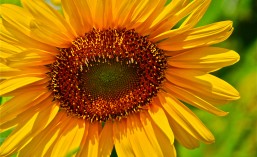All Nature seems at work. Slugs leave their lairs,
the bees are stirring, birds are on the wing,
and Winter slumbering in the open air,
wears on his smiling face a dream of spring.
~Samuel Taylor Coleridge
The sanctuary below earth and sky is throwing open its doors, doors once “frozen” in bondage, and the introit to springtime’s metaphorical “high mass” is beginning. Presiding currently over the opening ceremonies are the avian high priests, the cardinals, but with the arrival of the vernal equinox on March 20th, other clergy will appear to perform the holiest of sacraments upon earth’s ancient altars.
The vernal equinox may be 3 weeks away, but with the emergence of each new leaf and bud and bird Creation’s heart is beating stronger and stronger. Spring’s early chants echo close to the ground, and as they reverberate near branch and cane, they tell me that the rest of spring’s holy voices will join in soon. When they do their arias will reach crescendos that climb garden walls and charge over hedgerows. And these ever increasing waves of spring’s sweet sounds will cross the land, discernible to some extent even in the mighty cement jungles of commerce, until summer draws near and spring’s benedictions and blessings are snuffed out by summer’s ever-increasing waves of heat.
Within the quiet, eternal rhythms of God’s heart one finds wholeness, harmony, and healing for the brokenness that transpires in the maelstrom of human madness and the exhaustion of today’s “cultural currents.” Through the clouds of modern man’s spiritual and ecological pollution, the light that was in the beginning breaks brilliantly every spring as the sounds of the eternal emerge triumphantly from winter’s silence teaching the listener to reverence not only the Creator but all that He has made including his/her own existence.
You set all the boundaries of the earth; You made summer and winter. ~Psalm 74:17










